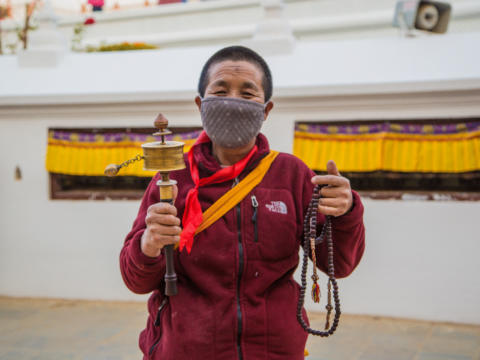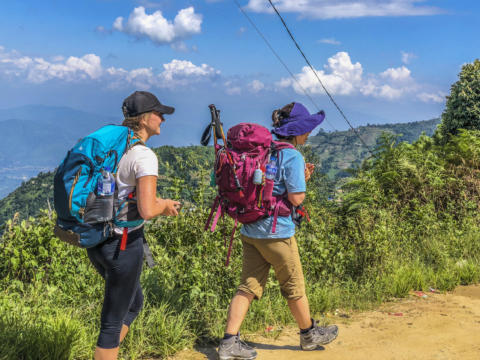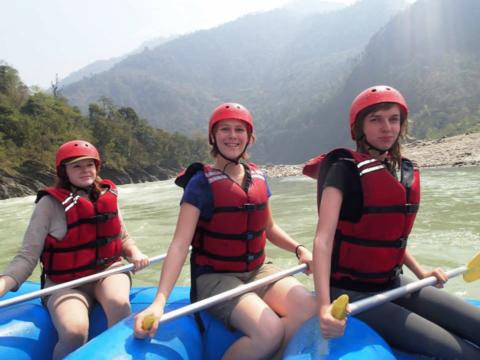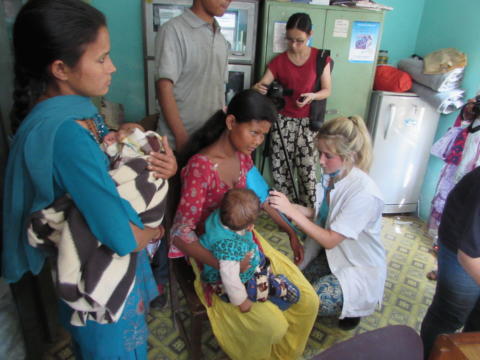Only 900€ per week!
Poon Hill Trek
Poon Hill - Nepal
Poon Hill Trek is a wonderful opportunity to witness the beauty of the Annapurna region with a shorter trek.
The trip starts from north of the city of Pokhara and winds through the Poon Hill area and passes through the mid hill region of the Himalayas. You will explore Annapurna’s most visited trail, encounter different varied cultural regions in front of Himalayas – dramatic views of the snow capped Annapurna Himalayan panorama inclusive!
Program Description
Poon Hill Trek is a wonderful opportunity to witness the beauty of the Annapurna region with a shorter trek. The trip starts just north of the city of Pokhara and winds through the Poon Hill area and then passes the many cultural and beautiful landscape of mid hill region. Along the Ghorepani Trek you will be visiting of the best panoramic spot on planet “Poon Hill” from where you will get chance amazing views of whole Annapurna and Dhaulagiri massifs. Together Ghorepani Trek leads you to explore typical culture of Annapurna region and their local lifestyle. The entire trails of Ghorepani Trek also leads you to see many natural wild flowers especially rhododendrons which blooms in spring. Overall this trek makes you to experience many things about Nepal and the route is suitable for every level of hikers-family, retired groups and all non-technical hiking groups which is one of the lower elevation treks that we offer rising to only 3200m Poon Hill atop.
Trip Highlights:
Explore Annapurna’s most visited trail, encounter different varied cultural regions in front of Himalayas – dramatic views of the snowcapped Annapurna Himalayan panorama, Western Himalayan range’s giant Dhaulagiri- Poon Hill 3210m view point visit- best photographic spot, beautiful eco hamlet lodges foods and typical hill terraced cultural lifestyle and more…. Ideal for every age group … family holiday destination.
Trekking Essential Information
Accommodation during trekking
In trekking region, we offer you accommodation in tea house (mountain lodge). A Tea House is a combination of guest house, restaurant, and social hang out. The rooms are separate with twin beds and very little additional furniture. Blankets are generally provided. Most bathrooms are shared and toilets can be either squat type of the western version. Most of the Tea Houses have running water facility. Many of them provide hot water for shower.
Meals during trekking
You will usually have breakfast and dinner in the lodge; lunch will be eaten at one of the trail side restaurants. Every Tea House serves the traditional Nepali meal of Dal Bhat (rice and lentils), as well as a variety of different food items, such as rice, vegetables, noodles, potatoes and soup. Some restaurants have western food such as pizza, pasta and French fries. Soft drinks, snacks and beer are available in most of the Tea Houses and trail side restaurants.
Safe Drinking Water in Trekking
We provide chlorine liquid and water purification pills during the trek. You need to use 3 drops in a liter and wait 20 minutes to consume it. If you want to buy bottled mineral water, you are more than welcome which is available at the tea house.
Trekking coordinator
We offer you an experienced trekking coordinator. He is in charge of your overall trekking. This is the person you should go to with all your problems, concerns and questions. He is well trained in all aspects of trekking, high altitude medicine, first aid and emergency procedure. He is selected in terms of his professionalism. Remember that trekking coordinators are local citizens and their English may be basic and limited to trek related topics.
Walking in a day
During trekking you do walking 7-8 hours a day with lunch breaks along the trail. The maximum altitude is 3200 mts which is poon hill viewpoint.
Aims & Objectives
The aim of this program is to bring you closer to the authentic Nepal and the majestic Himalayas and truly immerse you in the Nepali culture, customs and lifestyle.
Schedule
Sunday
- Bus from Kathmandu to Pokhara (200 km)
Monday
- Pokhara to Tikhedhunga (1,577m)
- Two-hour drive to Nayapul (1070m) and start trekking following Bhurung Khola
Tuesday
- Tikhedhunga to Ghorepani (2,855m)
- Ascend to Ulleri Village through a pleasant Rhododendron forest and arrive at the top of Ghorepani pass
Wednesday
- Ghorepani to Tadapani (2,680m)
- Early wake up and walk up to Poon Hill for one hour to observe the sun-rise and a magnificent mountain view
- Walk back to Ghorepani for breakfast and start trekking to Tadapani
Thursday
- Tadapani (2,680m) to Pothana (1980m)
- After enjoying spectacular views from Tadapani, we will trek passing through the deep mossy forest toward Ghandruk village all the way to Pothana. It is one of the most renowned settlements of Gurung tribe of Nepal and cultural inhabitant of the Annapurna trail.
Friday
- Pothana to Pokhara (820m)
- About 3-4 hours easy way down via Dhampus village to Phedi
- Drive to Pokhara
On Saturday we drive back to Kathmandu.
Note: This schedule can be changed and/or amended depending on weather conditions, local conditions and unforeseen circumstances.
Participant Criteria & Requirements
Standard Requirements
Minimum age: 18
Maximum age: –
Minimum English level: Basic
CRB required: On Signup
Passport copy required: On Signup
Resume copy required: No
Required qualification: None
Additional Requirements
Due to the length and active nature of this program, a decent level of fitness is required.
Additional Equipment
We recommend following equipment and items to pack for your trekking trip.
For Head
- Sun Hat / baseball cap
- Fleece/Wool hat (to cover ears) for winter
- Sunglasses & reading glasses
- Scarf to cover face (dust/wind)
For Lower Body
- Under garments
- Hiking shorts – 1
- Lightweight walking pants – 1
- Light weight thermal leggings – winter
- Fleece or tracksuit pants
For Feet
- Thin cotton inner socks
- Thick warm wool hiking socks
- Hiking boots
- Sandals
- Walking poles
For Upper Body
- T-shirts
- Lightweight thermal tops – winter
- Fleece long shelve tops
- Down vest/jacket – winter
- Poncho rain cover
For Hands
- Lightweight fleece gloves – winter
- Playing card
- Trail map & guide book
For Sleeping
- Sleeping bag
- Sleeping bag liner
- Pillow slip/case
Medical Kit
- See your Doctor for complete medical kit
Accessories
- Headlamp & spare batteries
- Dry packs
- Open neck water bottles
- Watch with light & alarm
- Pack cover
- Day pack
- Money belt
- Toiletries & Personal Hygiene
- 1x quick dry towel & face cloth
- Shampoo & Conditioner
- Toothbrush & paste (biodegradable)
- Multipurpose wipes (face & body)
- Deodorant
- Face & Body moisturizer
- Nail clippers/file
- Small comb/brush
- Clothes washing soap (biodegradable)
- Toilet paper (you can buy more on trek)
- Anti-Bacterial wipes (4x packs)
- Hand sanitizer (small bottle)
- Sun block face/body high UV protection
- Lip block with UV protection
- Feminine hygiene products
Extra Items
- Camera & extra batteries
- Binoculars
- Reading books
- Journal & pen
- Energy/protein bars
- Walkman & Steripen
***Make sure to pack no heavier than 15kg after fully packed.***
Location
This route takes you through Pokhara, to Ghodepani, Ghandruk and Pothana.
About the Accommodation
Along the route you will have overnight stays in hotels/tea houses. More information can be found inside the schedule.
Food Arrangements
Mostly Nepalese style dishes (vegetarian and chicken) will be served during the trip.
Facilities
Along the route – but not at all times – there are ATMs and small local stores. Please make sure you have enough money with you before starting the trip.
Activities & Events
No scheduled activities outside the program.
Sights & Surroundings
You’ll be on a busy schedule.
Transportation
From this location we do not provide free transport to other locations.
Quick Facts
Name: Federal Democratic Republic of Nepal
Population: 28.98 million
Capital: Kathmandu
Language: Nepali
Currency: Nepalese rupee (NPR)
Time zone: UTC +5:45
Country Information
Namaste and welcome to Nepal, a country of high Himalayan Mountains, artistic monuments, exotic wildlife, and diverse cultures. Located between 80 12' east longitude and between 26 22' and 30 27' north latitude, Nepal extends along the south slopes of the Himalayas in central Asia.
Although Nepal is small, it has the greatest latitudinal variation of any country. The land rises from the southern plains of the Terai, barely above sea level at 70 meters, to the top of the Mt. Everest, the highest peak on Earth at 8848 meters above sea level, in a distance of less than 200 km.
Climate
Weather conditions in Nepal vary from region to region. Summer and late spring temperatures range from about 28C in the hill region of the country to more than 40C in the Terai. In the winter, the average maximum and minimum temperatures in the Terai range from a brisk 7C to mild 23C. The central valleys experience a minimum temperature often falling below the freezing point and a chilly 12C maximum. Much colder temperatures prevail at higher elevations. The Kathmandu Valley has a mild climate, ranging from 19 to 27C in the summer and 2 to 20C in the winter. In the winter, it only snows in the high elevations, around 9,000 feet. In the highest elevations, it snows year-round. The monsoon can last from mid-June to mid-August although the majority of the rain arrives in July.
Winter: From December to February, the mornings and evenings will be cold; in the daytime, you will be fine with a sweater or thin jacket.
Spring: From March to May is the best time to be in Nepal as it is neither hot nor cold. However, it does get quite windy.
Summer: June to August. Hot, humid and monsoon season.
Fall: Very pleasant and mild weather. It gets a bit windy but you will be fine with a sweater or a jacket.
Culture
Nepal's many ethnic groups are as varied as its land with their own languages and cultures. A wide variety of ethnic groups occupy the mid-hills. In the Kathmandu Valley the major population that we find is Newars, whose culture and artistry have earned them an international reputation. The Sherpas are known as tough mountain climbers. Brahmins and Chhetris are scattered over the hills and valleys, and Tamangs are found in the districts around the Kathmandu Valley. The Rais, Limbu, Gurung, Magars of the mid-hills have earned fame as Gurkha soldiers. Lowland ethnic groups such as Maithili, Bhojpuri, and Tharu enhance the colorful mosaic. The population of Nepal is about 28.98 million.
Transportation
Local Bus
One of the cheapest ways to get around Nepal. However, you get what you pay for! They are often crowded (and not just with people, sometimes even goats!). Most buses don’t depart until they get filled up, so it is not a good idea for those who have a tight schedule.
Tourist Bus
These are slightly more expensive than local buses but also more comfortable. Greenline buses offer routers between Kathmandu, Chitwan, Lumbini and Pokhara. It is recommended to book in advance to make sure you get a seat.
Taxis
Taxis are either private taxis as in any other cities or “10 Rupee” taxis, which are public. This means they don’t leave a place until they are full. The name, “10 Rupee taxis” does not mean they cost 10 Rupee! Do feel free to bargain





